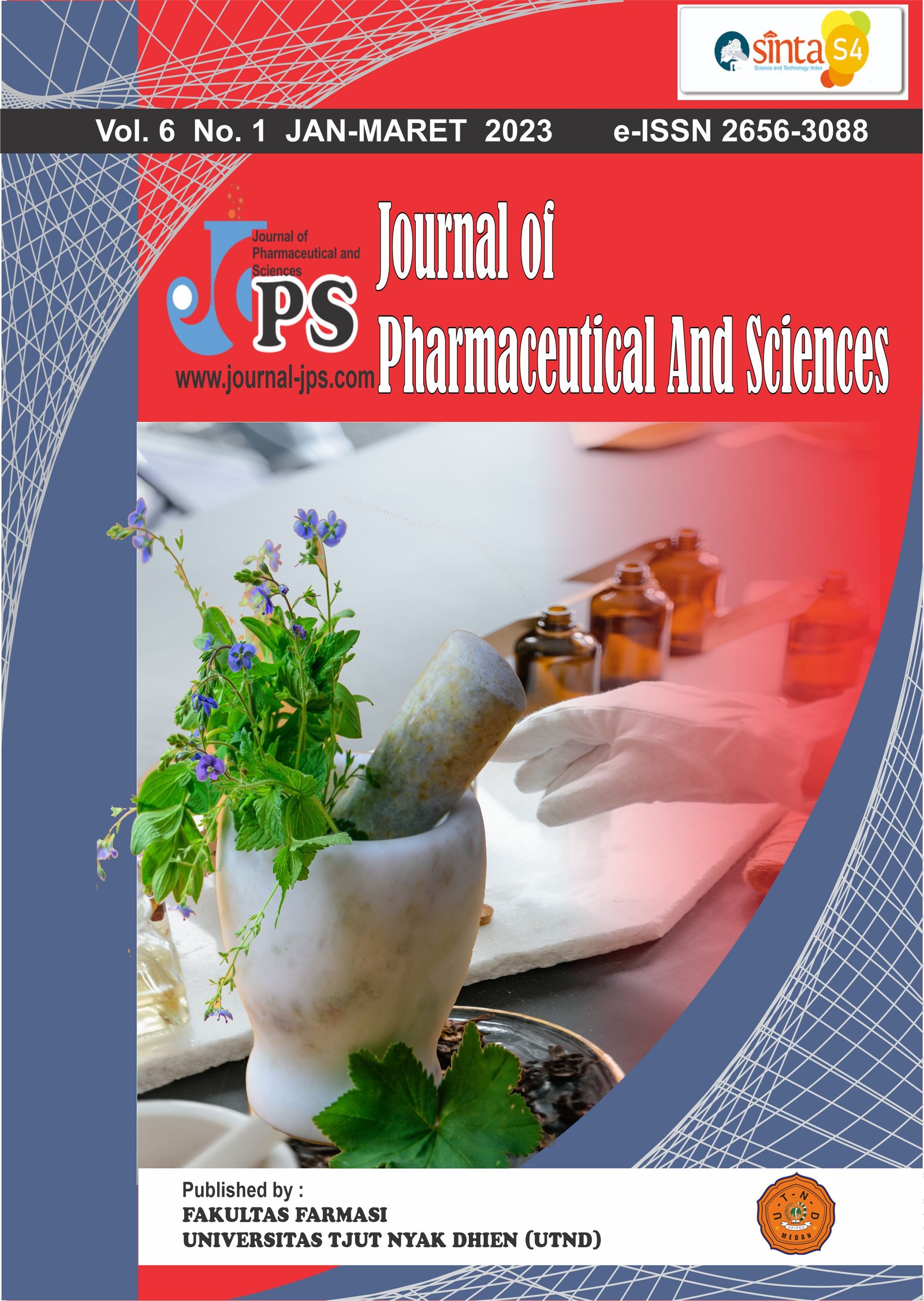KINETIC STUDY OF DETERMINATION THE REACTION RATE OF VITAMIN C IN BROKOLI (Brassica oleracea L) USING TITRIMETRIC TITRATION METHOD
Main Article Content
Page: 1-7
Abstract
Background: The damage to broccoli is caused by several factors, namely mechanical and biological. The value of freshness in broccoli can be seen from the rate of respiration, which will affect on weight loss, texture, moisture content, color changes, vitamin C content or increased physiological and microbiological activity. Methods of studying the kinetics of vitamin C oxidation reaction can be carried out through literature values, distribution turnover, distribution abuse tests, consumer complaints, and accelerated shelf-life testing. The objective of the research was to determine the effect of vitamin C levels on the reaction rate equation in terms of expired date. Objective: To determine the effect of vitamin C levels on the reaction rate equation in terms of the expiry date. Methods: This study uses a cross-sectional method, namely making observations by collecting data that has been going on and reviewing the results of research that has been going on. Results: showed that broccoli at room temperature storage had the highest vitamin C content, namely 7,216 mg, at 10C ± 2ºC broccoli contained vitamin C levels of 5.045 mg, at 5Cº ± 2ºC broccoli contained vitamin C levels of 4.283 mg and at temperature 0Cº ± 2ºC broccoli contains vitamin C levels of 4.713 mg. Conclusion: The conclusion of this study is that there is a relationship between vitamin C levels and the reaction rate equation in terms of expired date, from the results of the study it was found that there were changes in the reaction rate in the zero order, first order and second order based on storage temperature, the order that most affected the reaction rate equation was in zero order because the value of zero order r2 is close to 1
Downloads
Article Details

This work is licensed under a Creative Commons Attribution-NonCommercial-ShareAlike 4.0 International License.
References
Abdullah, B. A. (2016). Accelerated Shelf Life Test (ASLT) Method With Arrhenius Approach for Shelf Life Estimation of Pineapple, Papaya And Cempedak Juices. Informatika Pertanian, 25(2), 189–198.
Abidin, Z. (2011). Pengaruh Perebusan Buah Pare (Momordica charantia L .) Dalam Media Air dan Santan Terhadap Kandungan Vitamin C. http://repositori.uin-alauddin.ac.id/6537/
Asmara, A. P. (2016). Analysis Of Vitamin C Level Contained In Mango Gadung (Mangifera Indica L) With Varied Retension Time Elkawnie. Journal of Islamic Science and Technology, 2(1), 37–50. www.jurnal.ar-raniry.com/index.php/elkawnie
E.F, A., E.O, E., A.M, K., & M.M, A. (2017). Kinetic Modeling of Vitamin C (Ascorbic Acid) Degradation in Blanched Commonly Consumed Salad Vegetables Using Computer Simulation Analysis. IOSR Journal of Applied Chemistry, 10(04), 59–66. https://doi.org/10.9790/5736-1004015966
Grudić, V. V., Blagojević, N. Z., Vukašinović-Pešić, V. L., & Brašanac, S. R. (2015). Ispitivanje kinetike degradacije askorbinske kiseline cikličnom voltametrijskom metodom. Chemical Industry and Chemical Engineering Quarterly, 21(2), 351–357. https://doi.org/10.2298/CICEQ140712037G
Karaginan, P., Merah, L., & Provinsi, A. (2019). Al-Kimia. 7(2).
Khatir, R., Ratna, R., & Puri, M. A. (2015). Pendugaan Umur Simpan Jagung Manis Berdasarkan Kandungan Total Padatan Terlarut Dengan Model Arrhenius (Shelf Life Estimation of Sweet Corn Based on Its Total Soluble Solid by Using Arrhenius Model). Jurnal Agritech, 35(02), 200. https://doi.org/10.22146/agritech.13831
Martono, Y., Sari, Y. E. P., & Hidarto, J. (2014). Penggunaan Model Arhenius Untuk Pendugaan Masa Simpan Produk Minuman Kemasan Berdasarkan Kandungan Vit C. Rekayasa Bahan Pangan, pp.50-62. http://www.ucarecdn.com/62853580-359b-4eaa-8896-806ce75f9e7a/
Nur, B. A., Frans, W., & Ireine, L. A. (2016). Kajian Pengaruh Pra Pendinginan Dan Suhu Penyimpanan Terhadap Umur Simpan Brokoli. Cocos, 7(5).
Okiei, W., Ogunlesi, M., Azeez, L., Obakachi, V., Osunsanmi, M., & Nkenchor, G. (2009). The voltammetric and titrimetric determination of ascorbic acid levels in tropical fruit samples. International Journal of Electrochemical Science, 4(2), 276–287.
Safaryani, N., Haryanti, S., & Hastuti, E. D. (2007). Pengaruh suhu dan lama penyimpanan terhadap penurunan kadar vitamin C brokoli (Brassica oleracea L). Buletin Anatomi Dan Fisiologi, XV(2), 39–45.
Sapei, L., & Hwa, L. (2014). Study on the Kinetics of Vitamin C Degradation in Fresh Strawberry Juices. Procedia Chemistry, 9, 62–68. https://doi.org/10.1016/j.proche.2014.05.008
Sari, K. N., & Ayustaningwarno, F. (2014). Kandungan Serat, Vitamin C, Aktivitas Antioksidan Dan Organoleptik Keripik Ampas Brokoli (Brassica oleracea var . italica) Panggang. Journal of Nutrition College, 3(3), 378–385. https://doi.org/10.14710/jnc.v3i3.6599
Sinchaipanit, P., Ahmad, M., & Twichatwitayakul, R. (2015). Kinetics of Ascorbic Acid Degradation and Quality Changes in Guava Juice during Refrigerated Storage. Journal of Food and Nutrition Research, Vol. 3, 2015, Pages 550-557, 3(8), 550–557. https://doi.org/10.12691/jfnr-3-8-10





